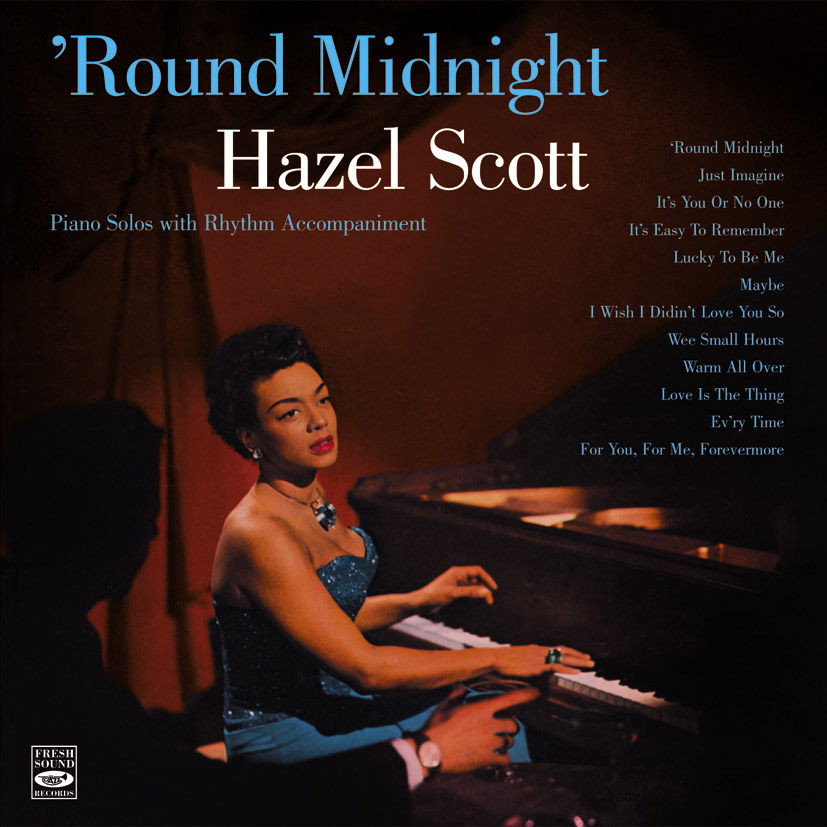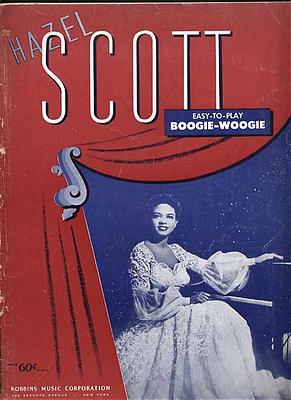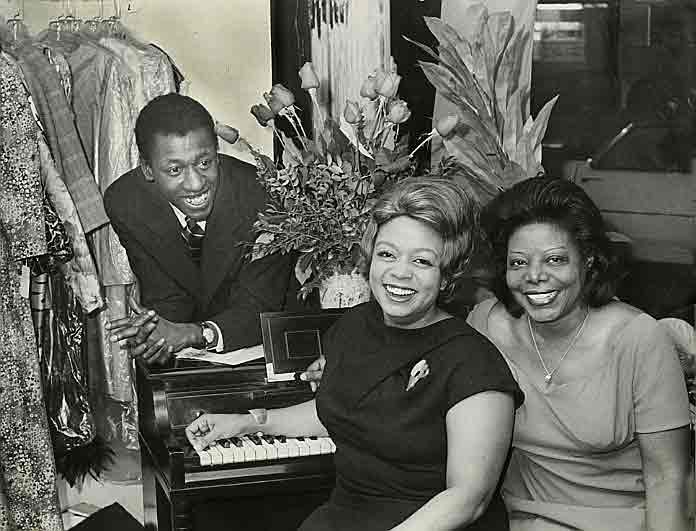HAZEL SCOTT


JAZZWOMEN DIRECTORY
- Afrikkanitha
- Toshiko Akiyoshi
- Geri Allen
- Andrews Sisters
- Angela Andrews
- Lil Harden Armstrong
- Dorothy Ashby
- Pearl Bailey
- Beverly Barkley
- Shirley Bassey
- JoAnne Brackeen
- Karen Briggs
- Suzanne Brooks
- Ruth Brown
- Blanche Calloway
- Diane Cameron
- Una Mae Carlisle
- Betty Carter
- Joan Cartwright
- Jeannie Cheatam
- Patricia Chiti
- Kim Clarke
- Gloria Coleman
- Alice Coltrane
- Sasha Daltonn
- Dee Daniels
- Gloria DeNard
- Dorothy Donegan
- Flo Dreyer
- Peggy Duquesnel
- Ella Fitzgerald
- Gloria Galante
- Rita Graham
- Jace Harnage
- Lenora Helm
- Billie Holiday
- Bertha Hope
- Shirley Horn
- Lena Horne
- Alberta Hunter
- Etta James
- Melba Joyce
- Jus' Cynthia
- KJ Denhert
- Mimi Johnson
- Gail Jhonson
- Sandra Kaye
- Emme Kemp
- Vinnie Knight
- Saskia Laroo
- Lavelle
- Jan Leder
- Peggy Lee
- Abbey Lincoln
- Melba Liston
- Gloria Lynne
- Tania Maria
- Dee Dee McNeil
- Marian McPartland
- Carmen McRae
- Mabel Mercer
- M'zuri
- Sandy Patton
- Trudy Pitts
- Terry Pollard
- Cheryl Porter
- Gertrude "Ma" Rainey
- Lenore Raphael
- Carline Ray
- Irene Reid
- Jessie Mae Robinson
- Patrizia Scascitelli
- Hazel Scott
- Rhoda Scott
- Shirley Scott
- Amanda Sedgwick
- Nina Simone
- Bessie Smith
- Dakota Staton
- Carol Sudhalter
- Monnette Sudler
- Maxine Sullivan
- Alexis P. Suter
- Dotti Anita Taylor
- Sumi Tonooka
- Sarah Vaughn
- Dinah Washington
- Ethel Waters
- Elisabeth Welch
- Carolyn Wilkins
- Mary Lou Williams
- Nancy Wilson
- Lillette Jenkins Wisner

Hazel Scott and Marylou Williams
Born on June 11, 1920, Hazel Scott - pianist, vocalist (1920 - 1981), hails from Port of Spain, Trinidad, under the guidance of her mother Alma; she began playing piano at the age of two. Hazel began formal music training after the family had moved to the United States in 1924. She made her formal American debut at New York’s Town Hall two years later and by 1929 Scott had acquired six scholarships to Julliard School of Music in New York City. Unfortunately she, at fourteen, was under age (the school admitted at the age of sixteen only). In the meantime she joined her mothers All-Woman Orchestra, playing piano and trumpet.
By the time she was sixteen, in 1936, Hazel Scott was a radio star on the Mutual Broadcasting System and playing at the Roseland Dance Hall with the Count Basie Orchestra. In the late thirties, she appeared in the Broadway musical Singing Out the News and after that, Priorities of 1942. Scott’s film credits include Something to Shout About, I Dood it, Tropicana, and The Heat’s On, all in 1943, Broadway Rhythm (1944), and Rhapsody in Blue (1945).
During this time in one of the year’s most fabulous social events, Scott married the popular preacher and politician Adam Clayton Powell Jr., though they separated several times and divorced in 1956.
During the early 1950s, she became the first black woman to have her own television show, but due to accusations of being a communist; her show was canceled. Scott defended her position in fund-raising events, fighting for groups in the name of equal rights. She was widely recognized for her efforts in the struggle for racial freedom and justice.
When she became a celebrity in the 1940s, and even when she had her own television show in 1950; movie producers offered African American actors only stereotypical roles. Long before the civil rights movement made organized protest common for African Americans to register their desire for equal rights, Hazel Scott, defied racial stereotypes, portraying a positive screen and stage image, thus improving the opportunities for other African Americans in the entertainment industry. Even for a celebrity of her caliber, Scott, like most African Americans during the 1950's, was no stranger to Jim Crow segregation. She, however, acted with dignity while promoting American patriotism and racial integration, and denouncing communism. In short, Scott was an astonishing sultry song stylist who created her own concept of black pride and steadfastly adhered to it.
She was known for her skill in combining jazz improvisations with a classical piece, and was quite adept at it. She was a consummate performer and her nightclub performances were well patronized and acclaimed. Though Scott recorded for Decca, Signature, Tioch, and Columbia labels, she went into the Debut studios on January 1955 with no less than Charles Mingus and Max Roach. On the aptly titled (and newly expanded for CD) “Relaxed Piano Moods,” the sophisticated lady handles standards, her own blues “Git Up from Here,” and J. J. Johnson’s enduring jazz ballad “Lament” with considerable aplomb and a pearl-like touch. This has proven to be her most enduring jazz date, and is considered her premier effort.
In 1967, after living in Paris, she returned to America and appeared on the television shows Julia and The Bold Ones. In 1978, she was inducted into the Black Filmmakers Hall of Fame. Hazel Scott continued to perform until her death on October 2, 1981.

